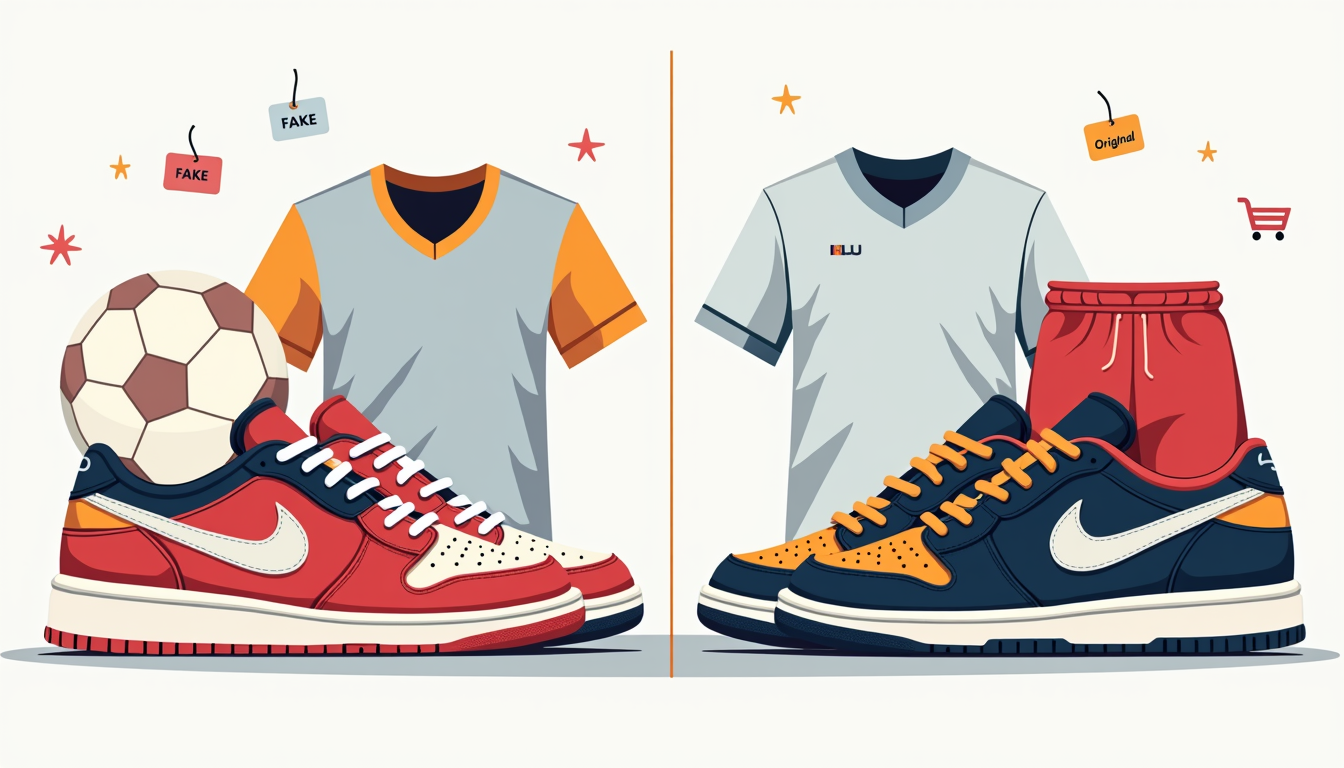The popularity of online shopping has grown significantly in recent years as the internet has been more widely used. Negative sides of the scenario, such as sports goods counterfeiting, have also been brought about. Counterfeiting is a problem in the sports industry, particularly for products with strong brand recognition. This can seriously harm the industry in addition to undermining consumer confidence.
In the sports product industry, counterfeiting refers to the copying of original products and the release of inferior imitations. Although the appearance of these fake goods can frequently be very comparable to that of the real thing, the workmanship and material quality may differ greatly. Sports goods are frequently counterfeited in a number of ways, including apparel and accessories, sports equipment, jewelry and accessories.
Effects on Consumer:
Consumer harm is one of the most significant consequences of sports product counterfeiting. Products that are counterfeit frequently don't live up to consumer expectations and may even be harmful to their health. For instance, foot injuries might result from imitation sneakers with subpar soles. Furthermore, buyers could be tricked into paying more for counterfeit goods than real ones.
Impacts on Industry:
In addition to hurting customers, counterfeit athletic products have the potential to seriously damage the sector. Original items could suffer from a damaged reputation, and brand credibility might decline. For original brands, this might mean a drop in sales and unstable operations. Furthermore, the emergence of fake goods may make companies less inclined to spend money on research and development (R&D) initiatives.

Offers a solution:
There are several ways to stop sports goods counterfeiting. Stricter customs procedures, compelling companies to take legal action against copycats, and educating customers about fake goods are a few examples of these remedies. Furthermore, internet marketplaces and platforms can create better ways to stop the sale of fake goods.
Consumer Education and Brand Awareness:
Increasing consumer awareness of the brand and teaching them about counterfeit goods are two of the most crucial aspects of the battle to defend brands. It's critical to educate customers about the distinctions between real and fake goods and to motivate them to choose reputable vendors. Brands must plan educational efforts and offer correct information to consumers in order to achieve this goal.
Brand Protection on Online Platforms:
Counterfeit goods can be marketed with ease in the online marketplace. As a result, it is imperative that brands create online brand protection plans. Online track and trace tools are a useful tool for brands looking to stop the selling of fake goods. In order to stop the selling of fake goods, they might also work with internet platforms to defend their brand rights.
Legal Defense and Action:
It's critical that companies defend their trademark rights through the legal system. It is effective to take legal action against the manufacture and sale of counterfeit goods in order to safeguard brand reputation and stop the trade in counterfeit goods. Companies who breach trademark rights may be subject to legal action by brands as a prevention.
Chain of Supply Audit:
Products that are counterfeit are frequently created and supplied at many phases of the supply chain. As such, it is critical for companies to keep oversight of the supply chain and carry out audits. By making sure distributors and suppliers follow brand guidelines, it is possible to stop the introduction of fake goods into the marketplace.
Technological Solutions:
Finally, in order to combat counterfeit goods, brands must employ technical solutions. Counterfeit goods can be identified and prevented with the aid of technological tracking and security measures like barcodes, holograms, and RFID (Radio Frequency Identification) tags.
Thus, for both brands and customers, sports goods counterfeiting is a significant issue. Nevertheless, by implementing trademark protection techniques and raising customer awareness, this issue can be resolved. Brands must employ a variety of strategies, including supply chain management, legal action and protection, brand protection, and technology advancements, to stop the trading of fake goods on internet marketplaces. As Counterfake, we strive to reduce this issue and assist brands by offering online brand protection services. Remember not to forget! Consumer safety and the preservation of brand reputation can both be guaranteed in this way.







